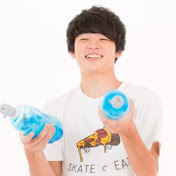Influencer Marketing in Japan
Japan has a population of over 127 million, 86% of which are active users of the Internet.
Japan will be amongst the top 6 countries globally in terms of internet users in 2018, right after China, India, US, Brazil and Indonesia.
The top social media platfrom in Japan is Line, Twitter, Youtube, Facebook and Instagram.
With more than 26 million people above 65 years old, Japan has a sizable number of senior internet users (>8 million) compared to other countries. Internet usage for age group between 20-49 is nearly 100%.
Total advertising expenditures in Japan were 6.288 trillion yen in 2016 (a 1.9% year-on-year increase). Of this, Online Media accounted for for 1.310 trillion yen, posting double-digit growth of 13.0% compared to the previous year.
Digital ad spend accelerated, while out -of-home and TV are expected to maintain well. Digital ad spend is expected to overtake TV by 2020.
Mobile ad spend is on schedule to command 72% of of the total digital ad spend by 2020.
Here is a quick lowdown on the top Social Media Networks in Japan
- Line
- Youtube
Line: LINE is the most frequently used social media in Japan based on monthly average unique users, followed by Facebook and Twitter. Number of LINE users in Japan is 70 million. Number of Line Sticker creators is 610,000. What’s significant about LINE users is that they are active, very active on the daily basis. 71% of users use LINE every day. 96% of users use it every month.
Twitter: According to Twitter, the network saw a 14% increase in users that pushed it above 40 million monthly active users (MAU) in Japan. Twitter Japan’s success is largely due to its mobile-friendliness and anonymity among its network, two factors that have shown to be very important to Japanese social networkers.
YouTube: The number of monthly active users (MAU) at YouTube in Japan in 2020 is forecast to be 39.77 million, an increase from 28.85 million in 2012. Japanese internet users spend more time on multimedia video sites such as YouTube and Niconico than they do on social media platforms, a usage pattern that runs counter to global trends. YouTube's own data places Japan in the top 10 countries globally in terms of watch time, while Niconico – which was founded in 2006 (just one year after YouTube launched in Japan) – had more than 4 million paying subscribers according to its parent company, Dwango. There is a rising trends of video streaming market. For example AbemaTV, a live streaming service operated by Internet advertising agency CyberAgent and TV Asahi, achieved 16 million downloads of its app just one year after being launched. In the sports segment, the Japanese market saw the start of DAZN, a sports streaming service provided by UK-based Perform Group. As for the entertainment segment, ShowLive from DENA has seen 2 million downloads within 4 years in the operations.
Facebook: Monthly active users on Facebook have grown steadily over the years. In 2019, the number of Facebook users in Japan is expected to surpass 30 million, up from almost 29 million in 2017. More than 40% of people in their 30s and 20s are on Facebook.
Instagram: According to recent data from Nielsen and NetRatings Japan Inc., the number of Instagram app users in the country hit 17.1 million in August 2017, a year-over-year increase of 43%. Instagram will see a continuous rapid user gain in Japan. Japan is a country where visual expressions often trump verbal ones, and where cuteness and traditional aesthetics are deeply wedded to popular culture. So it makes sense that Instagram, which is ideal for displaying those cultural mores, is growing in popularity.
In a nutshell, you can use these social media platform differently, depends on your business objective and target audience. Given how young people have turned away from television as a means to consume media, it's essential for brands to adopt the new media.
Top Influencer Marketing Statistics Every Marketer Should Know
- 70% of teenage YouTube subscribers trust influencer opinions over traditional celebrities.
- 86% of women turn to social networks before making a purchase.
- 32% of influencers who currently work with brands cite Facebook as the best platform, followed by Instagram at 24%.
- 71% of consumers are more likely to make a purchase based on a social media reference.
- 86% of the most-viewed beauty videos on YouTube were made by influencers, compared to 14% by beauty brands, themselves.
- 57% of beauty and fashion companies use influencers as part of their marketing strategies.
- On average, businesses generate $6.50 for every $1 invested in influencer marketing.
Why Influencer Marketing?
Brands looking into influencer marketing should take note of the trends in the industry in order to fully strategise their campaign. We have identified 5 prominent trends of influencer marketing coming 2018 and here's a summary.
As s hybrid of content marketing and native advertising, influencer marketing is an established trend in marketing that identifies and targets individuals with influence over potential buyers. Although this has usually meant focusing on popular celebrities and Internet personalities, there is a new wave of 'Micro-Influencers' that can have a large impact.
How To Get Started With Influencer Marketing?
Reaching out to Influencer Personally or through Influencer Marketing Agency
You may ask, what are the various ways to engage Instagram influencers in Japan to perform influencer marketing? There are simply two options: businesses to reach out to influencers personally, or go through an influencer marketing agency.
On the surface, it may seem reasonable to reach out to influencers personally with the presumed low cost and easy reach. However, with the vast amount of influencers in Japan, each focusing on specific topics of interest, performing influencer marketing and liaising can be a real challenge. To execute an effective influencer marketing campaign, one should be sure to read up on the various aspect of influencer marketing from the various articles and ebooks available online.
Alternatively, an influencer marketing agency would be of great help in terms of identifying the right influencer for your marketing campaign, negotiating prices and measuring results.
Japan Fastest Growing Influencer Marketing Agency
StarNgage is an Influencer marketing and reporting platform allowing brands to customise, manage, launch, and measure digital advertising campaigns on Instagram. StarNgage empowers brands to partner and advertise with everyday influencers - the same way you would on search engines or social networks!
StarNgage provides 4 main services: Targeting, Identifying, Amplifying and Tracking.
Target
Set your targeted customer profiles and categories while indicating preferred Cost-Per Engagement
Identify
Search for category-specific and brand aligned Influencers with the right profile to promote your campaign through our patented matching algorithm
Amplify
Mobilise Influencers to create optimised visual content that engages your targeted consumers, amplifies your brand, and generate online buzz
Track
Track your influencer marketing performance through our dashboard and measure your ROI. Pay based on desired results.
How To Choose Your Influencer Marketing Goals and KPIs
The Most Common Influencer Marketing Campaign Goals
After activating more than 20,000 influencers across 300 campaigns, we've seen influencers used in many different ways. Here are the most common goals we saw across our campaigns.
The Most Common Influencer Marketing Campaign KPIs
Reach
Can be measured based on the number of followers of influencers. Easy to measure, but the least valuable.
Clicks
Easy to measure and one of the most important performance based metrics
Engagement
Includes any social action (like, comment and share). Requires a hashtag or unique link for proper attribution. More value than a click.
Engagement
Includes installs, sign-ups, form completions and purchases. Hardest to measure, requiring a pixel & unique link or a promo code for attribution.
How To Choose Your Influencer Types

The Pyramid of Influence
The Pyramid of Influence encompasses the full spectrum of your influencer relationships. Here is a breakdown of how that pyramid works from the top down. Not all influencers are the same. Over the past few years, there is a big shift in focus from these high-end influencers to micro-influencers. To explain the different types of influencers, StarNgage uses the Pyramid of Influence. Influencers with a high reach and lower relevance, like celebrities and thought leaders, are at the top of the pyramid, while those with lower reach but higher relevance, like advocate and current customers are at the bottom. Micro-Influencers is a mix of people who have reach, but more importantly, have a high relevance among their audiences. Their influence lies in their niche understandings and the mutual trust with their audiences.
Spectrum of Influencers
The term ‘influencer’ used to describe celebrity and social media elite. But the mass adoption of social media leveled the playing field to include bloggers, instagrammers, youtubers and even everyday consumers. As such, the industry is working to establish a common taxonomy to talk about influencers. Influencers can be identified among the following three types:
Mega-influencers
Actors, artists, athletes and social media stars who have 500k+ followers and drive 2% to 5% engagement per post. They have the highest reach on the influencer spectrum, with their influence driven by their celebrity (they tend to be brands in their own right). They have the lowest overall resonance when it comes to driving actions on behalf of a brand.
Macro-influencers
Professional bloggers, and YouTubers who have large base of 100,000 to 500,000 followers and drive 5% to 20% engagement per post. They have the highest topical relevance on the spectrum, with category-specific influence – such as lifestyle, fashion or business.
Micro-influencers
Everyday consumers who have 500 to 100,000 followers and drive 25% — 50% engagement per post. They have the highest brand relevance and resonance on the spectrum of influencers, with influence driven by their personal experience with a brand and their strength of relationship with their networks.

Social Media Influencer Landscape in Japan
Mega-influencers: Earn their living some other way (e.g. athlete, actor, artist, top model, celebrity), and monetize their influence as a secondary source of income. (For example Shinji Kagawa, 浜崎あゆみ and Eir Aoi) Macro-influencers: Earn their living as an influencer (e.g. professional blogger, creator, or journalist). (For example Yuka Kinoshita, 水溜りボンド and ヒカルHikaru) Micro-influencers: Consumers who have relevant influence and may not know it, or aspire to become a macro-influencer. (For example Aki Weng, Yurie_akutsu and 川人 未帆) Brand Advocates: Consumers who are passionate and willing to share, but have little influence.
Top Youtubers (Youtube Influencers) in Japan
Top Facebook Celebrities in Japan
How To Choose Your Influencer Marketing Content Types
Plan Your Content Type Before Activating The Influencers
Brand Generated
Brand creates the content and influencers are activated to share it with their networks.
Influencers don't add any personalization; they simply share the content. Least risk.
Less Creativity and personalization. Least impactful.
Co-Developed
Brand develops guidelines for the content and influencers create their own content based on adaptation. For example: “Share a picture of your selfie in Singapore Botanic Garden”.
Moderate Impact Pontential.
Mild risk.
Influencer Generated
Content is generated by Influencers based on their creativity. Brand gives loose and generic direction.
Influencers have full creativity with loose guideline from brands. Maximum impact.
Review process is needed as part of risk management as the risk is higher.
How To Choose the Right Incentive for Your Influencer
Plan Your Incentives Before Activating The Influencers
There are different factors you should consider before making a decision on what kind of incentives you offer to your influencers.
Exclusivity: Incentives should be exclusive to only influencers that you like to activate in order to motivate participation in your influencer marketing campaign.
Influencer type: Most of the mega-influencers and macro-influencers will require cash payment, while micro-influencers will consider other form of compensations aside from cash.
Brand affinity: The most enduring and valuable level of influencer relationship is based on the mutual belief that the influencers and the brand share common values. It is advisable to activate relevant influencer who is passionate about your brands for best results. Branded incentives will work best in this case.
Fulfilment Effort: If more effort is required by the influencer to create and share branded content, then a higher incentive value is needed.
Types of Incentives
Cash
For most of the mega-influencers and macro-influencers, you will have to use payments for incentives. However for micro-influencers, some of them are open to receive VIP treatments and special branded incentives other than cash.
VIP Treatment
When activating micro-influencers, the most popular incentive is an exclusive experience. This type of incentive works best when they are passionate about your brand. This could be in the form of a discount, gift card, limited product giveaway, VIP free trial etc.
Recognition
Micro-influencers are more than happy to receive non-monetary rewards such as recognition. You can do this by featuring their content on your owned media such as Website or share their voices and give them a limelight on your social media channel.
Common Incentives Ideas
- Exclusive Event
- Early Access
- Discounts
- Free Trial
- Contest Entries
- Gift Cards
- Experience Box
- Limited Product Sample
- Priority Service
Brands use StarNgage to Find Influencers
Request a consultation to discuss how we can help your next Influencer Marketing Campaign
Request For A Demo
.jpg)



.jpg)









